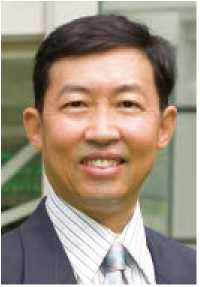San-Qiang Shi
1 Department of Mechanical Engineering of the Hong Kong Polytechnic University
EXTENDED ABSTRACT: A computational framework based on the multi-phase-field method was developed to study the complex microstructure and morphology evolution of metallic materials under the influence of chemical reaction, bulk and surface diffiision, surface passivation, sensitization, applied electrical and/or mechanical loading in aqueous or gas environment. The proposed framework makes use of Allen-Cahn equations for long rang order parameters (phase-field variables), Cahn-Hilliard equations fbr conserved variables, Nemst-Planck equations for ion transport, and Poisson's equation for electrostatic condition, together with mechanical force equilibrium equations. When chemical reactions were involved, the reaction rate was expressed as a function of the chemical (or electrochemical) potentials of reactants and products based on a detailed balance of the reactions. The framework was applied to study pitting corrosion of steels with or without the formation of insoluble corrosion products (passive film), stress corrosion cracking, corrosion of metal matrix composite under mechanical loading, intergranular corrosion of sensitized aluminium alloys, high-temperature metal oxide formation in gas phase under the influence of high Pilling-Bedworth ratio, nano-porous structure evolution during chemical dealloying of binary alloys. The characteristics of the model predictions agree well qualitatively, in many cases also quantitatively, with the experimental observations. Future perspectives of the developed framework in studying anisotropic growth and self-assembly of nanostructure and nanomaterials are discussed. This work was supported by multiple grants from Hong Kong RGC and NSFC.
Keywords: metal corrosion; multi-phase-field method; morphology evolution

Prof. Shi obtained his BSc and MSc in Physics from University of Science and Technology Beying in 1982 and 1984, respectively, and completed his Ph.D. and postdoctoral fellowship in Materials Science and Engineering from McMaster University, Canada in 1991. He then spent seven years at Atomic Energy of Canada Limited (AECL) as a research scientist and project leader. He joined the Department of Mechanical Engineering of PolyU in 1998, and was promoted to chair professor and became the department head fbr 8 years until retirement in 2021. Prof. Shi's current research and consultancy interests are focused on environmental degradation of materials and protection, computational materials modeling and advanced materials.